A Study of the Threes Phenomena
| Nature of 3s... 1 | Nature of 3s... 2 | Nature of 3s... 3 | Nature of 3s... 4 |
Viewers since August 9th, 2025
In my study of the "Threes Phenomena" it is of need to recognize other-than "three" patterns and denote how they interact in terms of human cognitive activity over time and subject matter. Content and context play a role since different cultures in different time periods may well exhibit one or more individuals whose orientation to reality would be judged by those of us in the present as being quite modern... or that they were ahead of their time, just as some people are no doubt cognitively better suited for some future (or past) era of intellectual activity. Symbolism and language as well as both recorded and unrecorded gesturing can well be expressing a similar perception, but the person either by routine, habit, or socially-ingrained vocabulary and word alignment, are accustomed to portraying the same or similar perception in accord with the prevailing observances of communication, unless they dare to strike out and create some new word, new symbol or new gesture of thought that one another may or may not accept as fortuitous for themselves to also use. Such is the case for every single subject humans have ventured into. No less is the case for a study of the "Threes" repetition.
While some will always prefer to use the number "3" symbol, others will adopt alternative representations, even allowing themselves to venture into the domains of geometry and a personalized calculus that no one else may at first grasp, unless they too spend some time with this orientation. As such, when noticing the recurrence of three-patterned ideas or events, I sometimes encounter what others may refer to as a "4" (or 5 or 6, etc...), but I can distinguish as a 3-to-1 ratio by investigating the realization of an internal differentiation to be made. Granted, I am a do-it-yourselfer who attempts to play all the bases at the same time, which is a metaphor for trying to address multiple considerations at the same time, in a type of ongoing devil's advocate approach to the study of threes. For example, I consider my attempts at collecting "threes" to be an ages-old occupation of those who played at the activity of developing a counting system. Hence, the placement of a 1 and a 2 fits well into a three-part theme. So does the assumed observations of a "4th" item, when multiple four-part items are collected and share the same value of being amiable to a 3-to-1 differentiation. There is a difference to be highlighted as a recurring cognitive theme of human brain activity. 3 -to- 1 ratios abound, and thus should not be lumped into a "three" category from which one decides to relabel the amalgamation as a multiplicity or plurality, unless of course it is to serve the three-patterned sequence of "singularity- duality- plurality". Such a case shows us that the human mind does not yet know how to portray multiplicity as that arising after 2 items, 3 items, or more.
For example, when you use the word "few" does it mean two, three or more? Likewise with the words some, many, more, much, pile, a lot, mound, bunch, etc... Whereas the case of language mixups is addressed by legal documents, this is no guarantee that someone will not come along and make the realization of an interpretation which undermines the best efforts to limit exceptions. Whereas the identification of a "three" example may pretty straight forward to many readers, I have found exceptions (viewed as variables) which require the revision of an existing equation, or creating a whole new mathematics quite reminiscent of a calculus. Whereas human perceptions may initially decode the presence of a "three" that most observers come to recognize, the human brain is not static. It may perceive something that does not go along with a standard model of conceptual agreement among the general public or even a select body of professionals, and thus may strive either to shoehorn the perception into the existing model or come to realize we need a new model of thinking which allows for the creation and introduction of an alternative way of perceiving reality. Indeed, such is the case that you may encounter someone having to resort to the development of a new word or symbol or mode of illustration that appears to be inappropriate for the context and is more suited for some other intellectual arena; but such efforts are exploratory and should be accepted as such and not automatically denigrated because someone doesn't support or mimic one's own inclinations based on a method of instruction involving overlooked enumerations such as the over-riding presence and influence of dualities found in Eastern philosophy, Western religion, Mathematics, psychology, computer language, etc., most of which have some connection with a commercial application.
Indeed, if you are a person whose developing consciousness is emerging into a realization of a three-patterned reality and you are subjected to a counselor, theologian, social worker, parent, guardian, psychologist, psychologist or well-intentioned other authoritative person(s) who are not even familiar with the idea of trichotomization and instead prefer that you adopt a mindset of duality, you are in trouble and may strive to adopt behaviors which distract, numb, modify, or otherwise keep your mind from developing as it should... all because they want to force you into maintaining a binary world-view... which has nothing to do with a socialized preoccupation concerning perversions of sexuality which are antithetical to the dominant practice seen and practiced in Nature.
Whereas public schools emphasize (force) kids to adopt a presumed cognitive orientation to logical decision making by using mathematics, the idea that science and the humanities can be taught by using a numerical schema similar to the practices of learning the number and alphabet sequences, has not yet dawned on the Education community. Mark's theme will no doubt be visited multiple times in the decades to come by millions of school children.
Along with Mark's perspective I have used the phrase "After Every Third". It's like a sporting event. For example, in baseball after 3 strikes the next team comes up and they get three strikes... even with the additional idea of a foul ball provision, we still retain a pattern-of-three but can now include the notion of a 3 -to- 1 ratio additionally seen in our enumeration of bases (1st, 2nd, 3rd), with the home plate/base remaining unnumbered in most cases (rendering a 3 + 1). Let me list a generalized sequence of events, though you may view it in a different occurrence. (I sometimes intersperse different examples from different orientations such as real-world examples alongside metaphysical and intellectual ):
- 3 (mathematically conceived) shapes to the Universe (flat, spherical, saddle-shaped)
- 3 alternative superstitious, colloquial and scientific shapes to the Earth:
- The Earth is flat (based on misperception and early superstition).
- The Earth is round/spherical (based on later perceptions and experiences of travelers, Geographers, Astronomers...).
- The Earth is a Triaxial ellipsoid (based on analysis of planetary forces).
- 3-to-1 ratio of enumerated Theories of the Universe: (Current Theories of the Universe)
- Singularity: Steady state Cosmology.
- Duality: Big Bang/Explosion and Big Collapse/Implosion.
- Plurality: Multi-dimensional because the physics of life generation appears to be too perfect or coincidental.
- Zeroth Configuration: Reality viewed as a simulation without an explanation offered for perceived repeating patterns.
- 3 galaxy categories: spiral- elliptical- irregular
- 3 main atomic particles (protons- neutrons- electrons)
- 3 distinctions to the shape of an atomic particle: (Particles, Waves, and Wavicles by Matt Strassler)
- They are roundish.
- They are wavish.
- They are wavicles.
- 3 Families/ Generations of particles:
- 3 duality series of Quarks (up/down, strange/charm, and top/bottom)
- 3 duality series of Leptons (electron, muon, and tau)
- Elementary Bosons. (Multiplicity)
- 3 Standard Model fundamental forces: Strong, Weak, Electro-magnetic (+ Gravity; creating a 3 -to- 1 ratio).
- 3 known stable Isotopes of Oxygen: 16 O, 17 O, 18 O.
- 3 naturally occurring isotopes of carbon: 12, 13, 14.
- 3 isotopes of Hydrogen: Protium- Deuterium- Tritium.
- 3 part ratio of N-P-K (nitrogen, phosphorus, potassium), is used for fertilizers.
- 3 main and 3 lesser element percentages in the human body: Elements
of the Human Body related to the mnemonic CHON or CHONPs as basic chemical elements
in life.
- Oxygen - 65%
- Carbon - 18%
- Hydrogen - 10%
- Nitrogen - 3.2%
- Calcium - 1.5%
- Phosphorus - 1%
- Potassium - 0.4%
- Sulfur - 0.3%
- Sodium - 0.2%
- Chlorine - 0.2%
- Magnesium - 0.1%
- Iron - 0.006%
- 3 -to- 1 ratio of Basic Macromolecules for life: Carbohydrates- Lipids- Proteins + Nucleic acids
- Carbohydrates- 3 categories: Monosaccharides- Disaccharides- Polysaccharides
- Lipids- 3 Classes: Triglycerides, phospholipids, Sterols
- Proteins- 3 Classes: Non-Essential, Conditionally Essential, and Essential Amino Acids
- Nucleic acids- consist of three parts: Nitrogenous base, Pentose sugar, Phosphate group
- 2 Main types of Nucleic acids: RNA and DNA
- RNA has three major types: Messenger (mRNA), Transfer (tRNA),
- Ribosomal
- DNA has three major forms: A, B, Z
- 3 general divisions to the Periodic Table: Metals, Nonmetals, Metalloids
- 3 basic identifiers: Element name- Element Symbol- Atomic Number
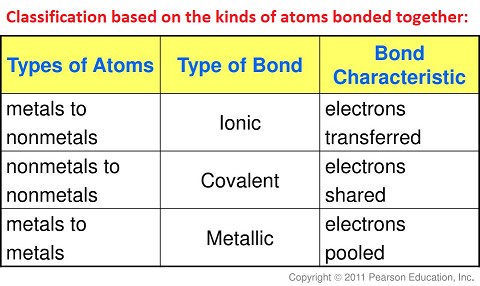
-
3 exceptions to Octet (Chemistry) rule:
- Some atoms have too few electrons to form an octet, like hydrogen, beryllium, and boron.
- Atoms beyond period 3 on the periodic table can have more than eight electrons called expanded octets.
- Molecules with an odd number of electrons, like free radicals, also break the octet rule.
- 3 to 1 ratio of Chemical bonds (Ionic, Covalent, Metallic + Hydrogen)
- Hydrogen bonding is a specific type of molecular interaction; it is weaker than Ionic and Covalent bonds
- 3 generalize distinctions of gravity: Sub-gravity, Gravity, Super-gravity (others use different labels within arithmetical boundaries: plus, minus, divide, multiply)
- 3 spatial dimensions (length- width- height) + time
- 3 proposed directions of "times arrow": horizontal- diagonal- vertical (+ mixtures thereof)
- 3 matter forms (solids- liquids- gases) + plasma
- 3 thermo-dynamic laws (1st- 2nd- 3rd) + zeroth is bases for the other 3
- 3 percentages for Dynamite Salt Peter 75%, Charcoal 15%, Sulfur 10%
- Also described as: three parts nitroglycerin, one part diatomaceous earth, and a small admixture of sodium carbonate.
- Military grade dynamite: 75% RDX, 15% TNT, 10% desensitizers and plasticizers.
- Blasting powder: 65% saltpeter, 20% sulfur, 15% charcoal

-
3-drug
cocktail used for lethal injections: (example from Arkansas)
- Midazolam (or Versed). [for sedation]
- Vecuronium bromide. [neuromuscular blocker]
- Potassium chloride. [heart stoppage]
- 3 (1-2-3) percentage mix of concrete: 1 part Cement- 2 parts sand, 3 parts water.
-
1- 2- 3-ply
toilet paper -(Sociologically speaking, we can see the lower- middle- upper class divisions.):
- 1-ply toilet paper: Budget-friendly, ideal for everyday high-traffic environments (such as Walmart, Home depot, Lowes, Restaurants, etc...).
- 2-ply toilet paper: Softer and more absorbent than 1-ply, for moderate traffic environments.
- 3-ply toilet paper: Superior softness, absorbency, and strength; for luxurious environments.
3 standard plies plus 2 customizations of bulk toilet paper construction (Reminds me of biological anomalies seen in nature where expected conformity reveals some isolated mutation due to variances in a given manufacturing environment. And note that while toilet paper is used regularly in developed countries, it is often substituted with other means such as water, leaves, newspaper, cloth, etc., in non-developed countries)... and typically wiping with the left hand just as we see that most left handed amino acidsare described as the building blocks of life and most planets rotate counter-clockwise.
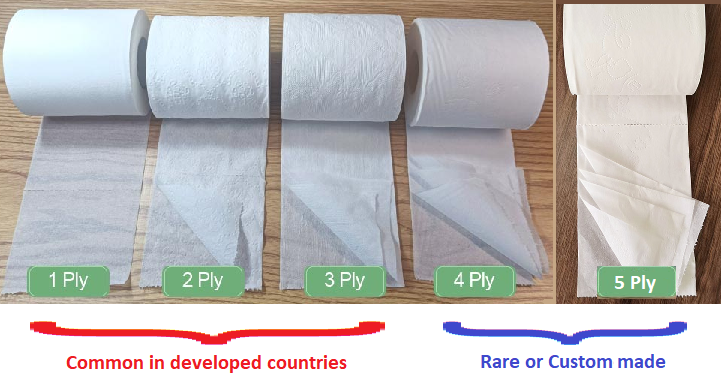
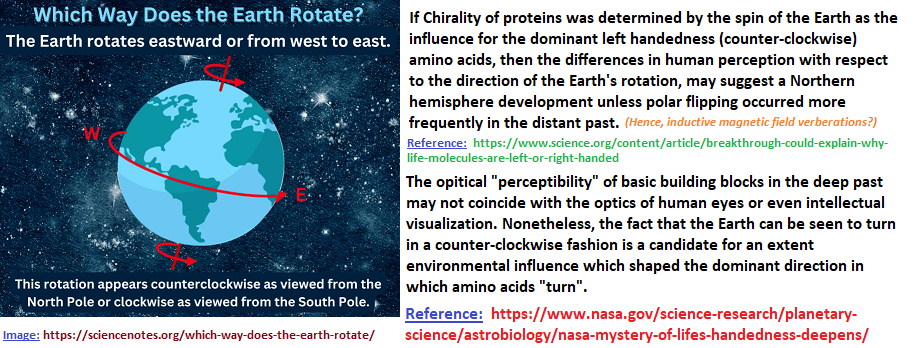
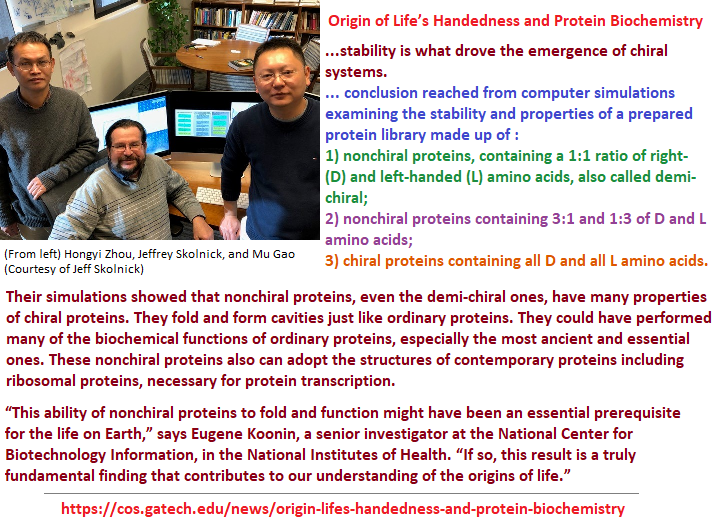
In the macro-level of human behavior and external reality perception, we can find distinctions of left and right preferences being exhibit. For example:
- Handedness- Most people are right handed
- Vehicle turning- Why Left Turns Are 55x More Dangerous Than Right Turns
- Jewelry wearing (including watches)- apparently female/male specificities, along with age, culture, traditions, fads traditions, etc...
- Brain Hemisphere attributes- basically, logical/serious on the left and creative importations on the right.
- Which shoe, pant leg, glove is put on first. Does one use the right or left arm for putting on a shirt?
- Number 1 Spark Plug- On the left, driver's side for most engines. Ford Motor Company adopted the right side, following the pattern used by British auto makers during his hey-day. (Alternative rationales could well be offered.)
- Galaxies- apparently at this juncture of human knowledge, galaxies can rotate in either left or right/up or down directions depending on one's vantage point.
- Universe- apparently at this juncture of human knowledge, the Universe does not appear to rotate.
- Time- Present day human understanding of the "Time" phenomena suggests it does not rotate, even though our clocks, based on visible environmental cues align time with mechanisms which rotate to the right.
- Energy, etc.,- there is presently no way for humans to determine whether or not all energies and all things considered by human thought rotate due to present sensibilities. The idea of cyclicity is in an extremely rudimentary model to be grasped by that which humans are interested in.
- Morality (and) ideology- ideas such as right thinking, right acting, right views, right words, etc., have been used.
-
Writing right to left: (twelve
countries)... do they also think in the same direction? Languages using
right-to-left scripts
- Arabic
- Aramaic
- Azeri
- Divehi
- Fula
- Hebrew
- Kurdish
- N'ko
- Persian [Farsi]
- Rohingya
- Syriac
- Urdu
- Writing direction- Most people living today right left-to-right and top-to-bottom?
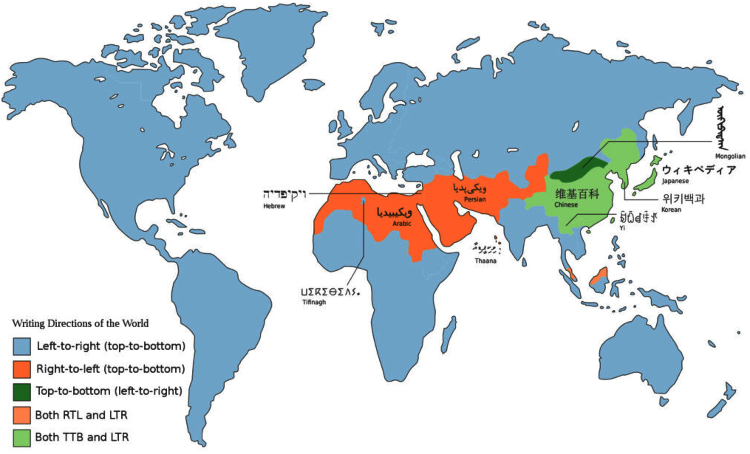
- 3 gasoline grades to 1 grade of diesel fuel oil and most U.S. retail outlets selling vehicle fuels.
- 3 to 1 ratio found in Mendelian genetics.
- 3 degrees Kelvin (approx. outer space temp.)
- 3 laws of motion (Newton)/3 laws of planetary motion (Kepler)
- Triplex inter-planetary connection: Sun- Earth- Moon
- 3rd planet where known life exists: Earth
- 3 general divisions to Earth (core- mantle- crust)
- 3 proposed domains of life: Archaea- Bacteria- Eukaryotes
- Triplet coded Macromolecules of life:
- 1st, RNA World (1-strand)
- 2nd, DNA World (2-stranded)
- 3rd, Protein World (Triple conformation such as Collagen)
- 3 to 1 RNA/DNA structure:
- RNA... Adenosine- Cytosine- Guanine + Uracil
- DNA... Adenosine- cytosine- Guanine + Thymine
- 3 stop codons: (UAA, UAG, UGA); 1 start codon (AUG, also encodes the amino acid methionine)
- 3 to 1 protein structure:
- Primary structure is bead-like
- Secondary, Tertiary, Quaternary structures are ribbon-like
- 3 named muscle types featuring the suffix "cep": bicep- tricep- quadracep... but no "mono"-cep distinction. Monocep muscles taken as a given just as we do not place a "1" for the presence of a single molecule when writing a chemistry formula. Nonetheless, such examples portray a frequent distinction between a "3"-set and a "1", as if we are unknowingly using an unrecognized model of place value notation where a comma is placed after every third number (integer). We can apply the idea to developmental biology as seen in the following illustration:
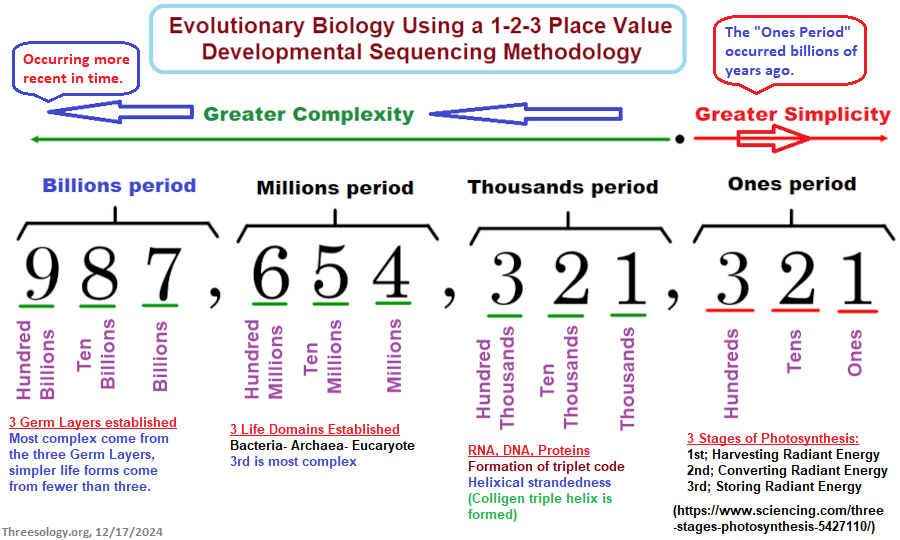
-
3 Germ layers for animal development: Ectoderm- Mesoderm- Endoderm
- 1 germ layer (simple life forms such as the sponges) ["monoploblastic"]
- 2 germ layers (more complex life forms such as the Cnidaria and Ctenophora) [diploblastic]
- 3 germ layers (animals from earth worms (flat/round) to humans) [Triploblastic]
- 3 perceived layers of the cell altered to reflect a "2" orientation and then no enumeration:
- Cell membrane described as having a Bi-Lipid Structure
- Later described as a "Trilaminar" structure.
- Next description was a Fluid Mosaic Model.
- No one has proposed calling the structure a Bi-lipid Mosaic Trilamination.


- 3 (3-4-5) model types for classification of Neurons (other than the "efferent/afferent" duality or the
"motor-sensory-inter neuron" categories):
- 3 Main Types based on structure: Unipolar- Bipolar- Multipolar (Types of Neurons)
- 4 Main Types based on structure: Pseudo-unipolar, Unipolar, Bipolar, Multipolar (Types of Neuron and their Function)
- 5 Types: Pseudounipolar, Unipolar, Bipolar, Multipolar, Anaxonic (Types of neurons author Konstantina Vraka and reviewed by Prof. Dimitrios Peschos, MD, PhD)
- 5 Types: Unipolar, Bipolar, Multipolar, Pyramidal, Purkinje (Neurons)
- 3 Separate Distinctions:
- Pyramidal cell - a type of multipolar neuron found in areas of the brain including the cerebral cortex, the hippocampus, and the amygdala. Pyramidal cells are the primary excitation units of the mammalian prefrontal cortex and the corticospinal tract.
- Anaxonic Neuron - An anaxonic neuron is a type of neuron where there is no axon or it cannot be differentiated from the dendrites.[1] Unlike typical neurons that possess a single axon transmitting signals away from the cell body, anaxonic neurons have processes that are all morphologically similar.
- Purkinje cells - Purkinje cells are a unique type of neuron-specific to the cerebellar cortex. They are remarkable (and instantly recognizable) for their massive, intricately branched, flat dendritic trees, which give them the ability to integrate large amounts of information and learn by remodeling their dendrites.
- 3 to 1 ratio view of neurons (as indicated by illustration):
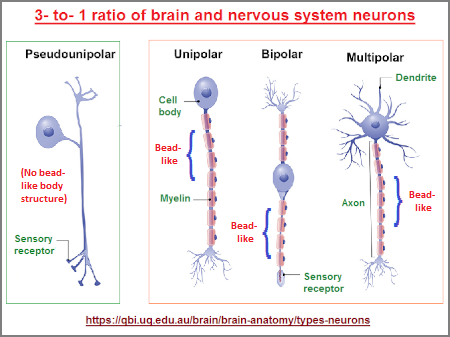
Note:
- 3 divisions to multiple anatomical parts
- 3 pounds (approximate weight of human brain)
- 3 patterns in the human ear, (which is a topic surprisingly absent for Linguistics, noting how much language is dependent on hearing):
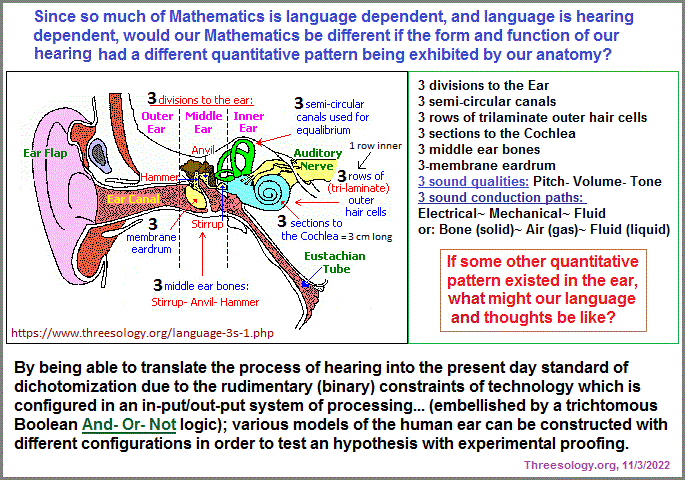
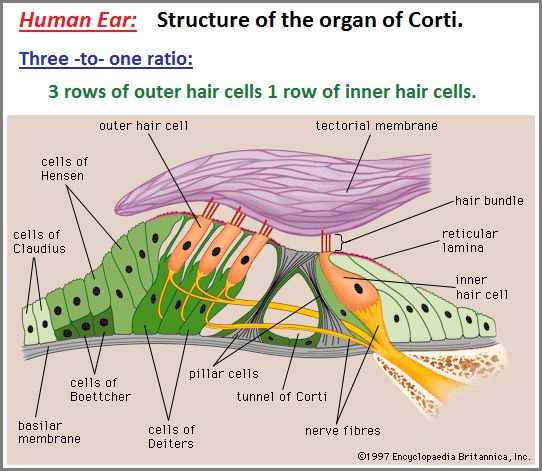
Before continuing on with the list of threes, a bit of discussion needs to take place so that the reader understands my orientation for addressing several issues which crop up, one of which is the idea of an originating source for the triplet code of DNA, from which life inevitably leads to the development of a species whose ideas about Nature and other perceptions are manifested with enumerations... or at least patterns which can be enumerated by the sentient being called humans. Yes, of course, I am speculating and my present realizations can be summed up as educated guesstimations. Nonetheltss, the readers of today and those who will come in the future need to know where my research has presently taken me, and where it has not. Indeed, you may be a reader whose ideas on the subject of "threes" is centuries ahead of everyone, and yet to try to offer them for examination, no one but yourself today may have the ability to grasp insights you... yourself may have some trouble grappling with. So let me back up a bit, and restart the journey with a different type of introduction:
Several three-patterned ideas are due to superstitions and other traditions which tend to travel the pathways of extended time and into different cultures. However, due to a lack of writing and other easily decipherable forms of communication in very distant eras, we do not know what basic cognitive patterns were being used by ancient forms of humanity and their assumed predecessors. While we can manipulate artefacts to fit almost any theory, interpretations are little more than guess work. For example, we don't know if the use of triangle-shaped stones was an unrecognized expression of a triangle, or simply due to someone having found an already-shaped example which they copied and others copied as well, due to the utility of such a tool. However, the triangle image reoccurs multiple times throughout history and also is seen in the behavior of birds such as the V (or VEE)-shaped flight pattern of migrating birds, the inverted conical structure of antlion burrows (funnel shaped pits), and the mounds of some termite species. No less, we might include truncated examples such as flat-topped pyramids, domes of beaver houses, and the V-formation of migrating animals such as when a leader is up front and others follow suit. No less, a more abstract consideration is to think that we overlook 2-dimensional (flat) forms of the triangular shape in such things as spider webs. While we humans may see an out-stretched inter-locked webbing, the spider's perspective may be one in which the web presents them with an image we might otherwise label a tornado or black hole configuration. Yet, there does exist a funnel web spider. The point is, we do not know when humans first expressed a "three" or any other value for that matter.
Granted, all the examples are based on human perception, no matter if you consider it right or flawed. In any respect, a list of threes must contain not only examples from religion such as called triads, triune, trinity or otherwise; the list must exhibit an attempt to survey multiple subjects as well as venture into speculative expressions and abstract models. This includes both past and present advertising, fads, and multiple other cultural categories... though ancient recipes utilizing sets-of-three ingredients will not necessarily be found, nor 3-patterned doodlings scribbled in the dirt. However, we must move beyond cultural obsessions with respect to individualized meanings of numbers such as those perspectives typically seen in Astrology and Numerology and similar cultural past-times associated with divination mixed with superstition. Such perspectives is similar to the current expression that the Sun moves across the sky when it actually doesn't move at all. Colloquial expressions are not always correct, but they do provide a tell-tale indication of how past impressions of simplistic perspectives can linger for centuries. However, the idea of the Sun moving across the sky has historically be seen in at least one of three ways:
- The Sun moves across the sky (in a linear fashion).
- The Sun goes over the sky (in a globular/spherical fashion).
- The Sun goes up and down on the sky (in a triangular fashion).
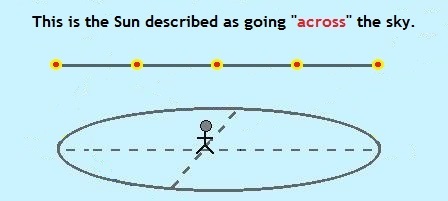 |
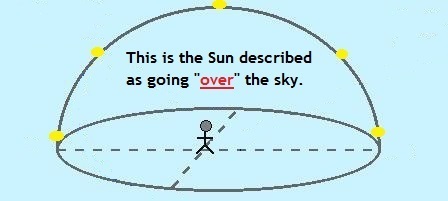 |
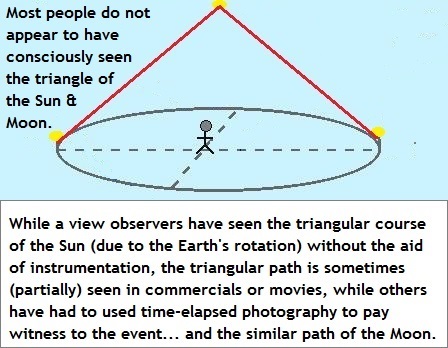 |
|
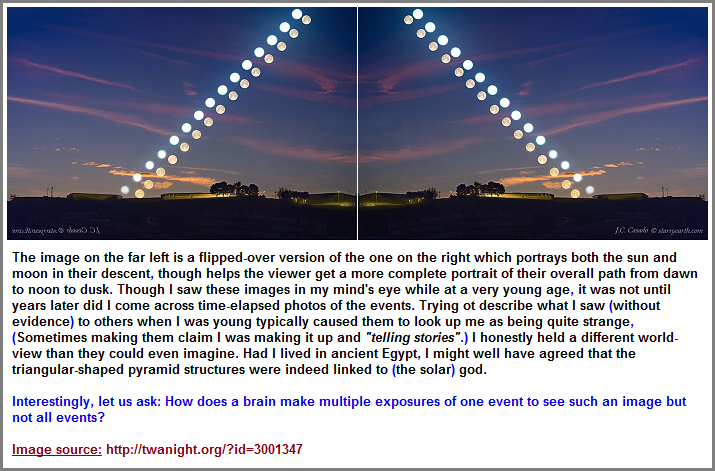
I am bringing up the topic of the Sun because it has played a dominant role not only in the development of life, but in the development of ideas. Geometric, symbolic and enumeration models can be attributed to the presence and activity of the Sun. One example of this is the commentary made by the Architect James Nasmyth: ( Sun-Ray origin of the pyramids, and the cuneiform character):
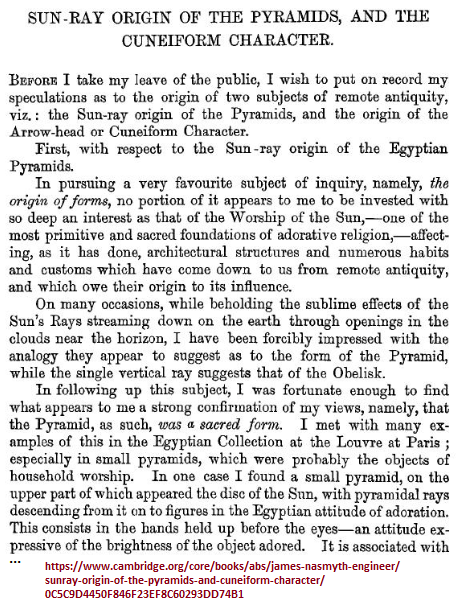
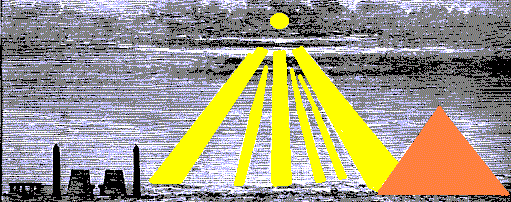
The idea of the Sun's rays coming through clouds to suggest the idea of a triangular design can be somewhat adjusted if we were to take a view of solargraphs and the following image which displays an accelerated view of the Sun's passage when the Earth was rotating billions of years ago:
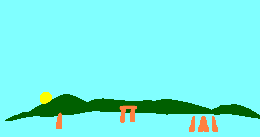
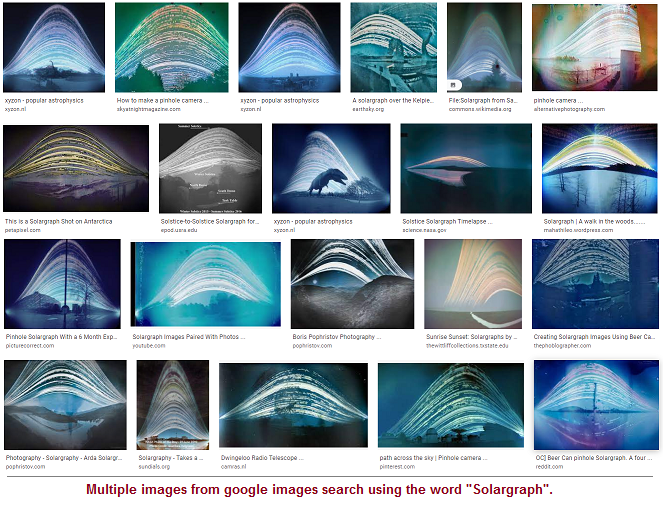
While the pyramid or triangle design influenced by the Sun shining through clouds is plausible, there are some other variables which must be assigned to this fledgling simple equation. Nonetheless, a word equation such as Sun + Clouds = Pyramidal image is easy to understand. However, the absence of ancient Egyptian-like Pyramids in different cultures doesn't mean different peoples didn't express the impression in different ways, such as the Tricorn (3-cornered) hat of early American colonists, the cone hat of early Chinese, pyramid hair styles, concepts of energy involving pyramidal structures, lamp shades, the physics of water wakes, Triangular UFOs, etc... A few illustrated examples should suffice:
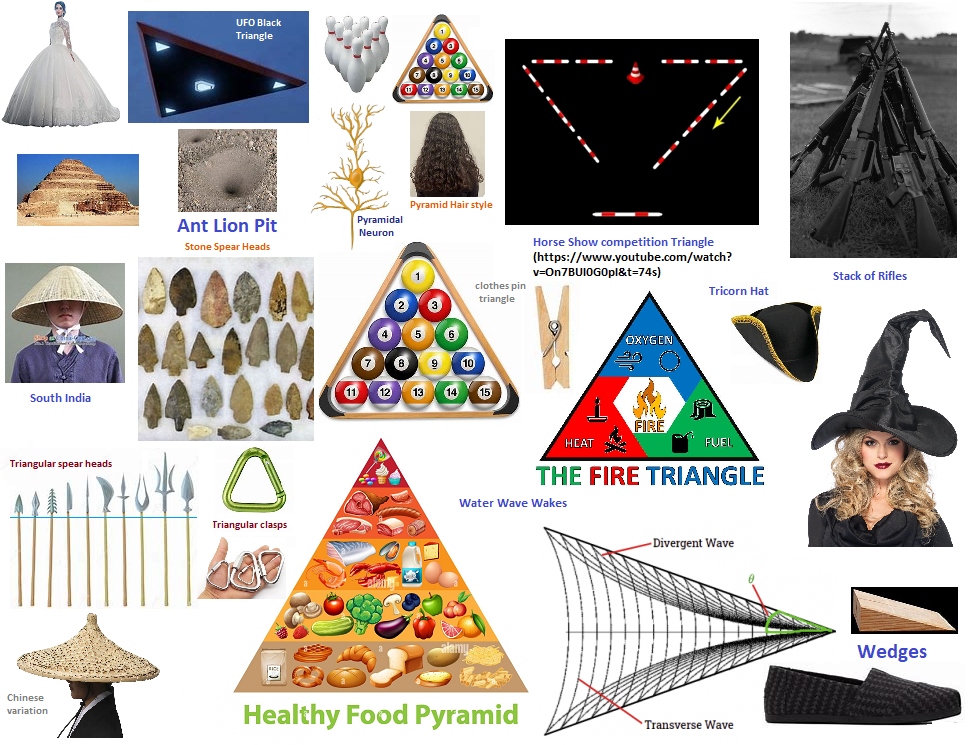
With respect to the series of Native American dwellings, please note what I previously said about the linear/flat- circular/dome- triangular/pitched path of the Sun. The dwellings exhibit all three solar path models, just as do the internal combustion engine types:

|
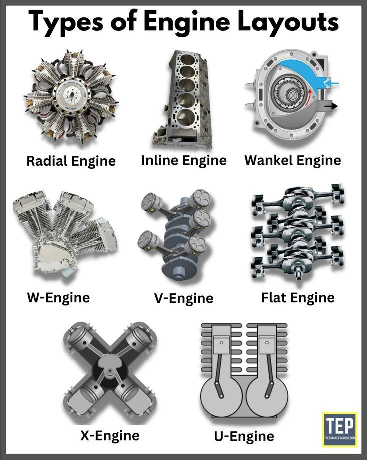
|
Date of Origination: Sunday, May 31st, 2025... 11:21 PM
Initial Posting Date: Saturday, August 9th, 2025... 1:26 AM